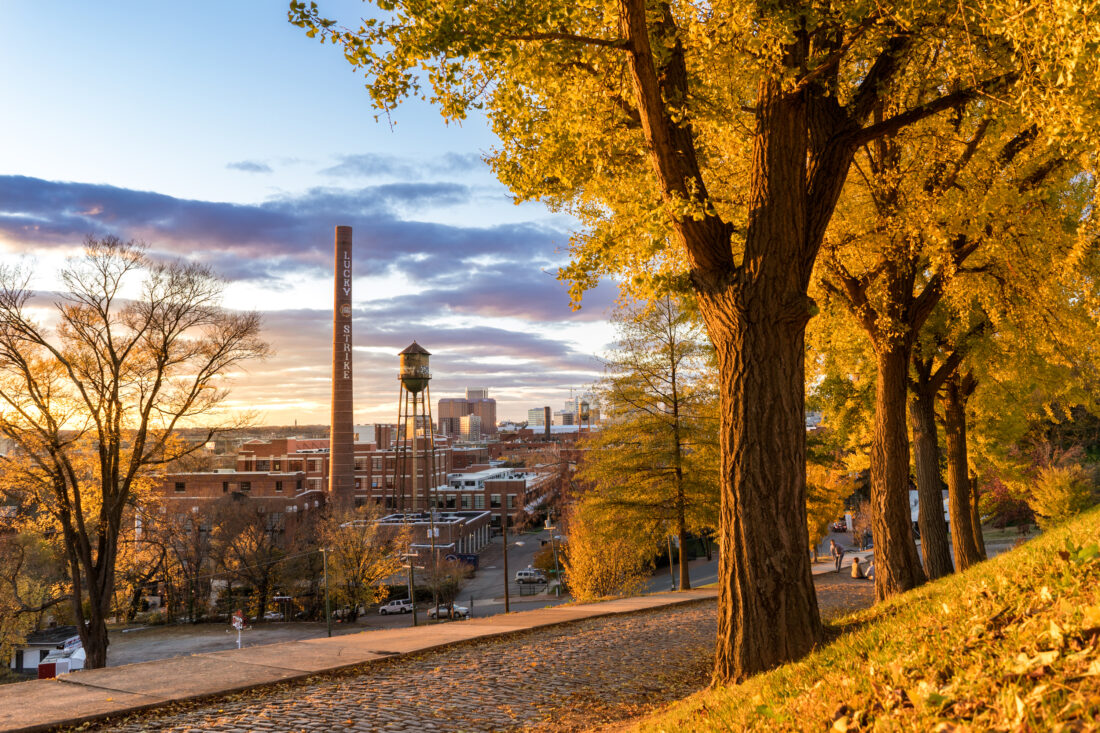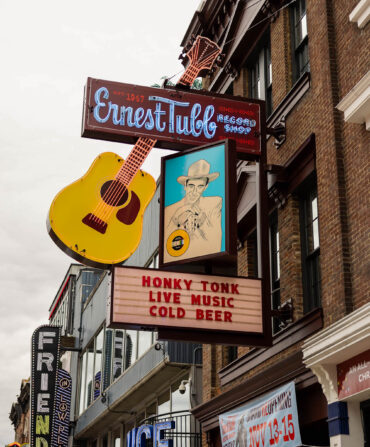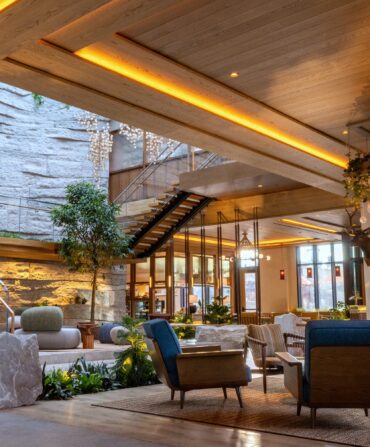Long before Libby Hill was Libby Hill Park, William Byrd II found his way to this James River bluff.
Maybe he was missing England, where he had attended school, but as he gazed down at the curving waterway that day in 1737, he was reminded of a hilltop view of Richmond Upon Thames, a leafy London village once home to the royal palace. That was the moment the colonial landowner decided what to call his new Virginia settlement.
Today you can follow a meandering park path to reach the same spot, where a faded sign welcomes you to “The View that Named Richmond.”
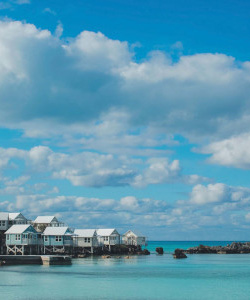
Just last year, the city and conservation groups finalized a four-million-dollar deal to purchase five acres of property and preserve the “viewshed.” The plan ended a decade-long battle with developers, who at one point proposed to build sixteen-story towers between the park and river that would have forever blocked the scenery.
That alone is a reason to celebrate the park, a National Historic Landmark in the heart of the city’s oldest neighborhood. But as much as I love history, that’s not why I love Libby Hill. This is where Richmonders relax and let down their hair. It’s a place where the city is forever on parade, where folks of all ages, races, and orientations come to walk their dogs, snuggle up on picnic blankets, and stretch out in yoga poses.

Curving paths and cobblestone walkways connect terraces and fountains, separating the park into distinct “rooms” where on any day you might find kids blowing bubbles, or a couple getting married.
Although it’s one of the city’s oldest parks, it’s a recent discovery for me. I first visited the city as an infant, on one of countless childhood trips to see my grandparents. Years later, when I interned for the Richmond Times-Dispatch, I lived in the city’s Fan District, another historic area once owned by William Byrd.
But truth be told, I never made it to Libby Hill. The area fell on hard times in the mid-twentieth century, hitting rock bottom in the early 1990s as crime and drugs ravaged the neighborhood. But slowly it began to revive. It’s only since moving back to Virginia a few years ago that I’ve found my way to Libby Hill. Now I try to work in a visit any time I’m in town.
I like to arrive just before sunset, as city lights start to twinkle and the streetside gas lamps glow. As twilight approaches, the park settles into a quiet murmur of unhurried conversations stretching well into the evening.

On a recent visit, my wife and I were stopped moments after we entered the park, interrupted by a man and woman seeking someone to take their picture.
I asked if it was a special occasion and the pair beamed. “We met here,” the young woman told us. A few years earlier, they had connected on an app and agreed to meet on a park bench for their first date. “That one,” she said, pointing to a wood-slatted seat behind us. Now the couple lives in Florida. On their first night back in Richmond, they returned to Libby Hill.
It seems there’s often some kind of photo shoot underway in the park, whether for students posing in graduation robes or families in matching sweater vests lining up on stone steps for a carefully choreographed Christmas card.
The seven-acre park sits on the edge of the city’s Church Hill neighborhood, and that alone is a reason to visit. Handsome nineteenth-century Italianate and Greek Revival homes line the streets. Historic markers provide details on the original inhabitants.
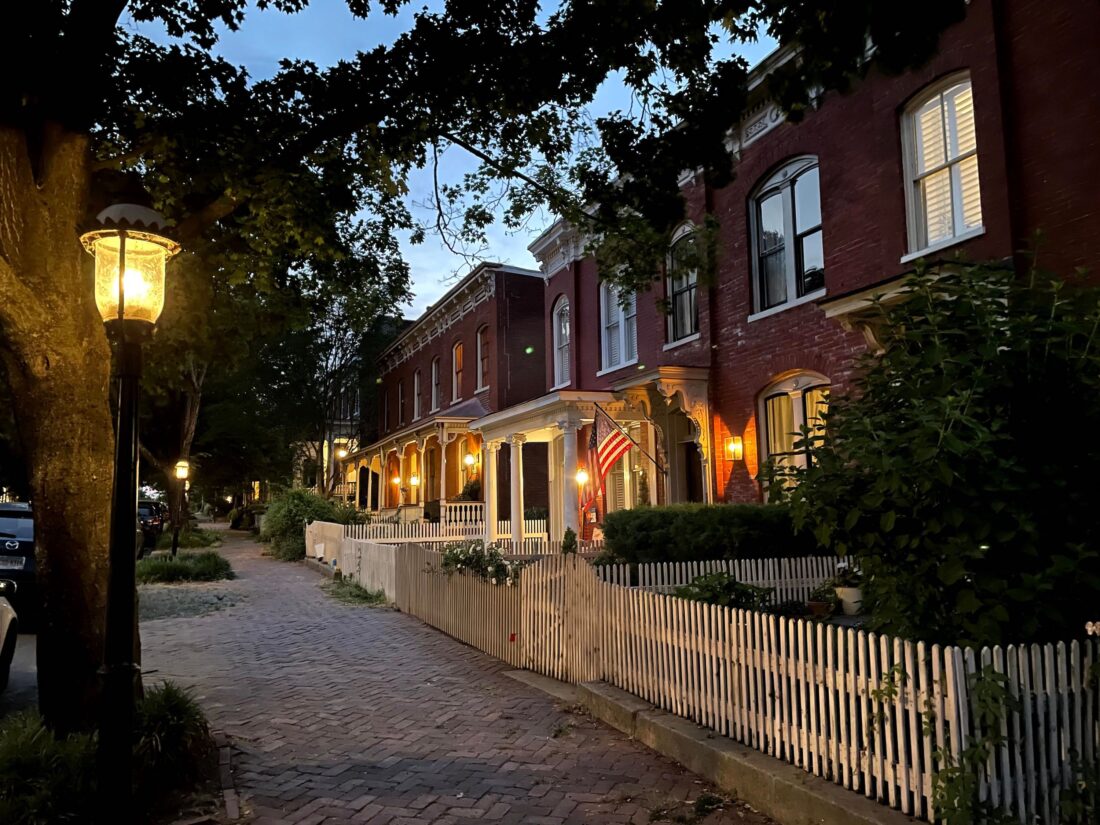
Richmond acquired the land in 1851, inspired by a new urban parks movement promising to give “breathing space” to closed-in city dwellers. A few years later the same idea led New York to build its Central Park.
But the neighborhood’s roots stretch back much further. Six blocks away stands St. John’s Church, where Patrick Henry rallied his fellow Virginians toward revolution with his “Liberty or Death” speech.
A few generations later, Edgar Allan Poe walked these streets to visit Church Hill homes, where he supplemented his meager writer’s wages by giving parlor room readings of “The Raven” and “Annabel Lee.” He also came to court his childhood sweetheart, who lived nearby on Grace Street. Reunited as adults, they planned to marry, and Poe spent his final night in the city visiting her. A few days later, he died mysteriously in Baltimore.
Today, tucked into small retail pockets, you’ll find some of the city’s most celebrated restaurants and bakeries, like Alewife, the Roosevelt, and Sub Rosa bakery.
But for me, everything comes back to the park view: what’s visible—and what’s not.
Although it’s obscured, the panorama takes in the fall line of the James River, which once marked the western edge of the Powhatan Indian Confederacy and is where Christopher Newport planted a cross in 1607 to claim Virginia for King James I of England.
You can also peer down and imagine the riverside path where Africans in chains were marched into the city to be sold at what became one of the nation’s largest slave markets.
The landscape includes a river canal and batteau system, originally envisioned by George Washington, that helped make Richmond a bustling inland port city and later the capital of the Confederacy. In April 1865, the day after the Union army conquered the city, someone standing on the bluff could have seen Abraham Lincoln and his son Tad traveling upriver to tour the smoldering ruins.
Just over a decade ago, the American Society of Landscape Architects named the Libby Hill vista one of America’s most iconic landscapes. But it’s hard to imagine exactly what William Byrd saw. Today, the view also includes Tobacco Row with its brick factories and warehouses that have been converted to lofts, and the Lucky Strike smokestack, which for more than a century has punctuated the skyline like a giant exclamation point.
Don’t let that distract you. Richmond, I’ve come to learn, can hide its Southern graces, revealing its beauty slowly. And in Libby Hill Park, the state capital feels like a small town. No one seems rushed, strangers chat, and if you look closely, you might find a bit of magic.
Take my last visit, on a warm afternoon. Walking across the park, I noticed a woman in a dramatic blue-green gown, who appeared to be a model hired by a photography club. As a dozen cameras clicked, the woman twirled her way up a path lined with gingko trees, her dress floating above the cobblestones, leaves fluttering around her. It felt like she had stepped out of a fairy tale, on her way, I could imagine, to a royal palace in Richmond.


